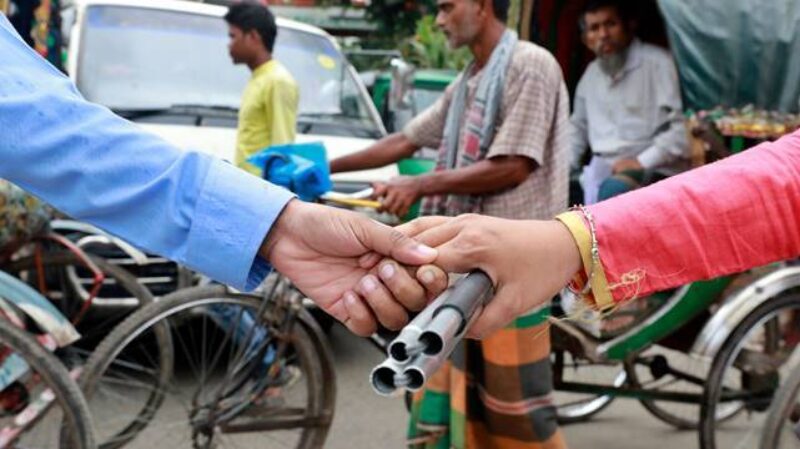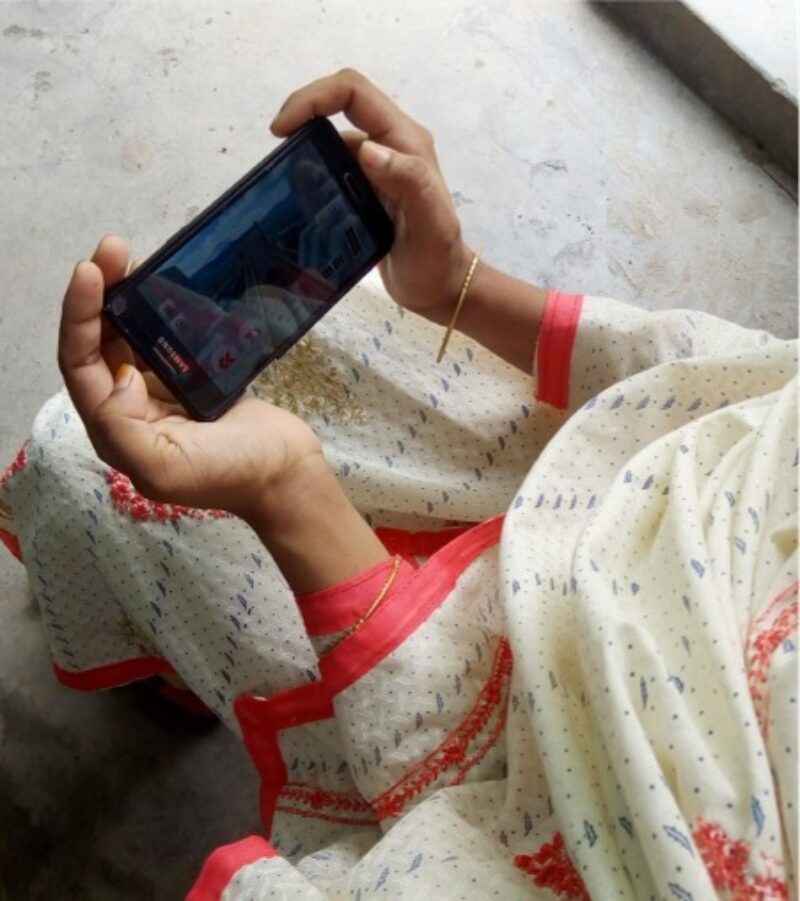Exploring the experience of persons with disabilities of using mobile technology in their daily lives in Kenya and Bangladesh

Understanding the mobile disability gap, report by GSMA 2019
I was privileged to conduct a Photovoice study in 2019 in Kenya and Bangladesh. The study was commissioned by GSMA, a trade association that represents over 750 mobile operator and digital players globally, as part of the UK Aid funded programme called AT2030 which is led by the Global Disability Innovation Hub. The results were used to give a visual presentation of how persons with disabilities use mobile phones and mobile technologies in their daily lives.
Photovoice is an accessible method for collecting personal stories which empowers people to capture and share details of their life through photographic journaling. Although, mobile phones are universally used for communication, for persons with disabilities they become essential assistive technologies that bridge barriers to opportunities which are not accessible otherwise.GSMA
The following benefits of using mobile phones and mobile technologies within daily life were captured by participants:

Understanding the mobile disability gap, report by GSMA 2019
Improved social connection
This is in line with other evidence that mobile phone devices can improve access to information, promote local knowledge, as well as facilitate sharing and improving social interaction for marginalised populations including persons with disabilities [1, 2]. In terms of social connection mobile phones helped to break isolation enabling participants to feel and be better connected with friends, family and support groups through phone calls, text messaging and video calling applications. People also felt connected through interacting with news, watching videos, listening to the radio, playing games or engaging with religious groups according to their faith. Online shopping was also seen as a convenient option. All of these aspects helped to reduce barriers and isolation and give people access to the outside world in situations where they may otherwise have become isolated.
Increased independence
When people had access to a mobile phone, they felt independent and empowered. This in turn allowed people to overcome social and physical barriers as well as discrimination and to gain confidence and respect. A key factor in this independence was the feeling of safety increased by having immediate access to a mobile phone in case of any negative event. Another crucial advantage of mobile phone was having access to reliable and trusted transport for both social and livelihood related purposes. This mitigates the challenges of poor infrastructure, lack of public transport options and perceptions of increased vulnerability to criminal acts of persons with disabilities.
Financial security
The benefits of personal financial independence could also be seen where participants were empowered by having control of their finances through mobile phone banking. This ranged from being able to check balances and transactions privately to using mobile phone banking for business purposes. This was particularly important for people with visual impairment who could use text to voice to confidentially manage their accounts and transactions. Inclusive financial services have been shown to be vital to poverty reduction and in particular mobile phone banking apps have been shown to help persons with disabilities to manage their accounts and finances without depending on others.
Access to opportunities
Participants noted significant benefits of improved access to education and employment when mobile phones were accessible. From conducting personal research and advocacy on rights to engaging or teaching in formal education the value of mobile phones and services were made clear. This links to increased employment opportunities and improved livelihoods. Participants relied on mobile phones and services to be able to perform jobs in the public, private and third sector. Access to online banking, mobile phone money transactions and loans were shown to be transformative when the right support structures existed.
Wider benefits were found regardless of phone type – basic phones, feature phones or smartphones – participants were using. The benefits reported increased when people used mobile phones which had internet access and smartphones that offered applications for messaging, social media or transport.
However, it is also important to note that access to basic or feature phones was perceived as highly valuable by participants due to accessibility features, size, weight and functionality. In several cases participants chose to use basic or feature phones due to their specific needs as well as affordability, digital literacies and the difficulty encountered interacting with touch screen interfaces.
This was part of a wider study captured in a GSMA report in Understanding the Mobile Disability Gap [3]which was funded through the AT2030 programme, led by the Global Disability Innovation Hub and funded by UK Aid. AT2030 will test ‘what works’ to improve access to AT and will invest £20m to support solutions to scale. With a focus on innovative products, new service models, and global capacity support, the programme will reach 9 million people directly and 6 million more indirectly to enable a lifetime of potential through life-changing assistive technology.
Further Reading:
[1] Inclusion and Independence: The impact of Mobile Technology on the Lives of Persons with Disabilities in Kenya and Bangladesh
[2] The Social Network: How People with Visual Impairment use Mobile Phones in Kibera, Kenya
[3] Understanding the Mobile Disability Gap